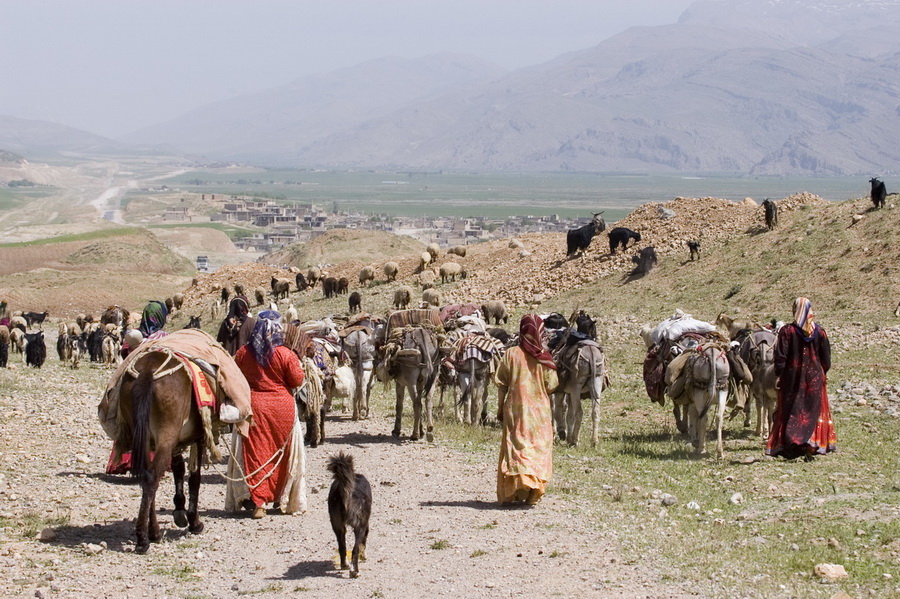
Figures suggest that the population of Iran's nomadic tribes is around 1,200,000 and that it is decreasing fast as a result of a growing tendency towards urbanization and the changing lifestyle among the tribal groups.
The Shahsavan Azeri-Turkish speaking pastoralists migrate between their winter quarters, qishlaq, in the Mughan steppe of Azarbaijan, and their summer quarters, yeylaq, around Mount Sabalan, approximately 150 miles (more than 240 km) to the south.
Recent decades have seen an increasing trend among the Shahsavan youths to abandon the nomadic tribal way of life, opting instead for living in the slums in the outskirts of the cities.
Urbanization has turned tribal women who used to be economically productive and cultural forces in the nomadic system of their tribes into consumerist people who are gradually forgetting their skills in arts and handicrafts and raising livestock.
In fact, nomadic tribes for years have been protecting Iran's culture and old traditions by leading a unique lifestyle, a sophisticated combination of traditional arts and economic trends.
But, for years governments in Iran have been trying to settle the nomads down despite the long history of nomadic life practiced by them and despite mulling over ways to protect their arts, handicrafts, oral culture, clothes, music, traditions and customs.
Over the past few years, many of the nomadic tribes in Ardebil have preferred not to migrate to summer quarters, what they had been doing for many, many years. Now, encouraged by the policymakers, they are settling in the winter quarters, forming new settlements and villages.
'In the previous years, a large number of tribes have opted for a settled way of life and they have been increasingly becoming urbanized,' Rahim Ahmadi a tribal man from the Mughan steppe told the Islamic Republic News Agency (IRNA).
'Even those tribes that do migrate, have abandoned traditional ways of migration and tend to use transport motor vehicles to do it at very shorter intervals,' Ahmadi said.
But according to him, there are still some tribes that lead the same old traditions and customs to keep alive the pageantry of the nomadic tribal way of life in Iran.
Yet, away from policies aimed at settling down tribes, it is believed that there are other reasons forcing them to abandon migration and settle down.
'Tribes are faced with an array of problems, including drought, scarcity of fresh water, lack of fodder for their livestock, animal diseases, lack of good roads for migrations, scarcity of medicines and healthcare as well as educational facilities,' said Rahim Qolipoor, another tribal man from Meshginshahr summer quarters.
Such issues have already exhausted people in the tribes, making them break for the cities,' Qolipoor added.
The nomadic tribal groups in Ardebil still play an important role in the economic growth of the province. Each year, they produce 12,000 tons of red meat, 43,000 tons of milk, 5400 tons of cheese and 1,500 tons of sheep wool as well as 14,000 square meters of different types of carpets, and tapestries like kilims and jajims.
The tribal way of life, in a world increasingly relying on tourism as a pillar of economic development, could well serve as a tool for promoting tribal areas; a capacity that planners in the country need to utilize in the best possible way.
2044**1771
Follow us on Twitter @IrnaEnglish
 solhkhabar | Peace International News Agency Peace International News Agency , Peace News , International Agency News of Peace
solhkhabar | Peace International News Agency Peace International News Agency , Peace News , International Agency News of Peace